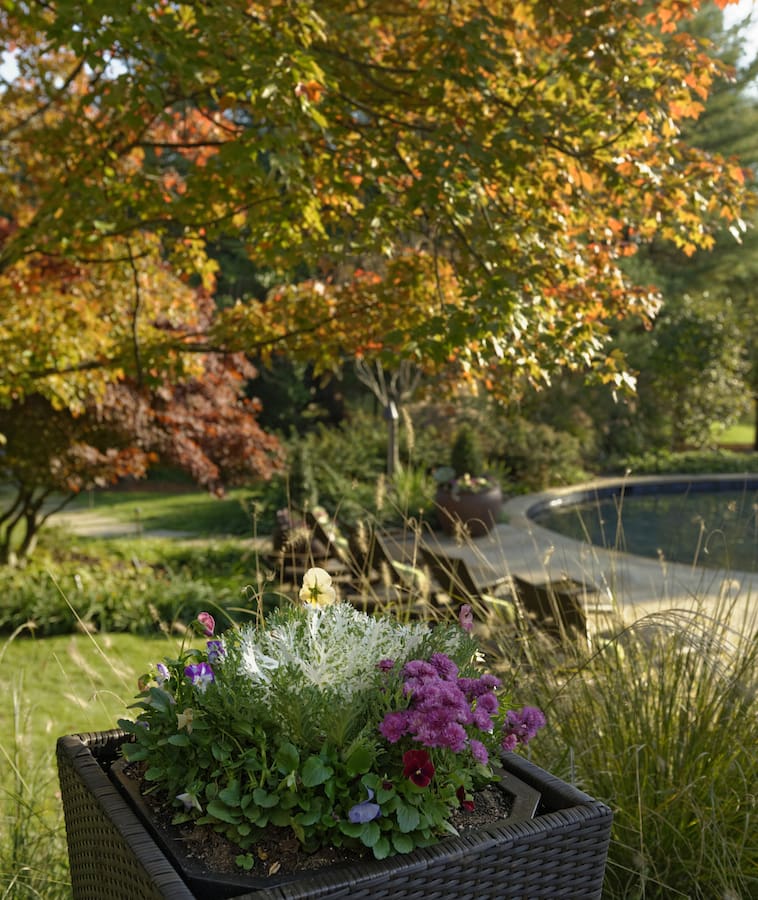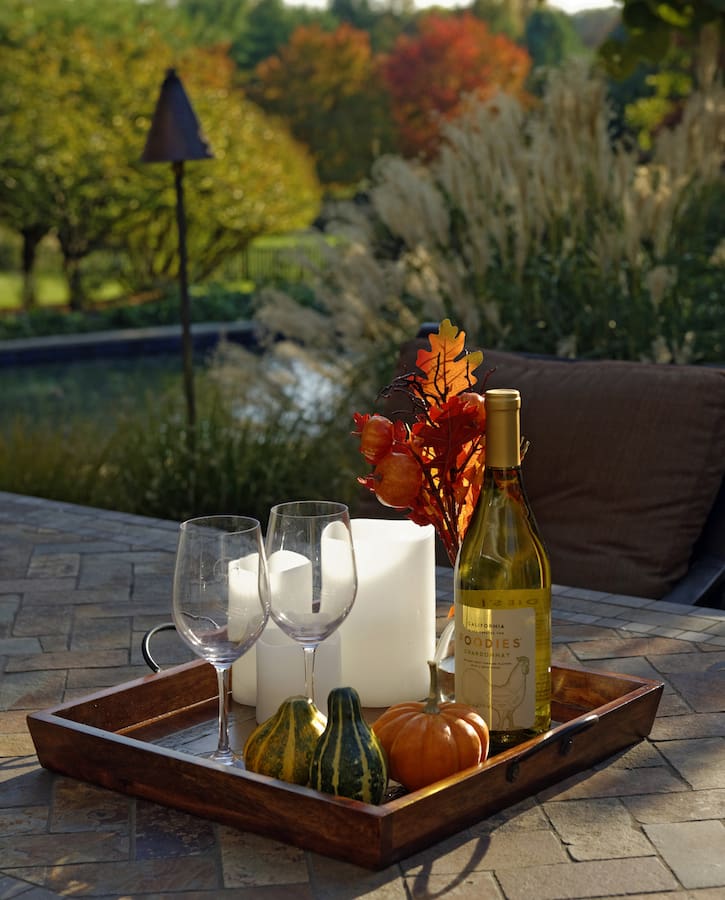 Fall Garden Care Tips In Fairfax County
Fall Garden Care Tips In Fairfax County
In Northern Virginia we typically enjoy a long leisurely fall with conditions well suited to pre-winter germination and growth. The landscape maintenance that you do (or don’t do) in the fall has a direct effect on the quality of garden you will see emerging in the spring.
End of Season Garden Care
Seeding, pruning, fertilizing and watering (and weeding!) as the growing season draws to a close, gives your lawn and garden plants the opportunity to store nutrients and be ready to grow when spring arrives. These ten garden care tips will ensure your lawn and garden plants are well prepared to come back strong in the spring–and beat the weeds in the race for sunlight.
- Lawn Care. The best defense against weeds is dense, well-rooted turf. Over-seeding and aerating in the fall gives the lawn a head start in the spring.
WHY: In fall there is less competition from weeds that thrive in the summer heat. Also, the warm soil and moderate air temperatures are ideal for germination. Core aeration injects oxygen into the soil–and oxygen stimulates root growth. - Planting. Fall is the best time to plant trees and shrubs.
WHY: As they approach the seasonal dormancy stage, plants switch their focus from above-ground growth to the roots where they gather and store nutrients for spring. Warm soil and cool air temperatures stimulate root growth. Plants establish strong root systems without the threat of heat stress. - Watering. This is something that might get overlooked on your fall garden care checklist because, if it isn’t hot out, you may not think watering is important. It is. Continue watering trees and shrubs, especially evergreens, before the ground freezes.
WHY: The dry winds of winter are harsh on plants and trees—especially evergreens because their foliage is exposed. Unlike deciduous trees that drop their leaves, evergreens can lose a lot of moisture in a harsh winter and that will affect their growth. You’ll want to ensure trees and shrubs are adequately hydrated before they “shut down” for the cold season. - Protect Sensitive Plants. For sensitive plants such as hollies, rhododendrons, azaleas, camellias, and magnolias we recommend spray coating with an anti-desiccant that coats the leaves with a protective waxy substance.
WHY: These plant varieties in Maryland and Virginia are in the northern-most reaches of their climate region. So they can use extra help to protect them from dehydrating frigid winds. - Perennials. Cut back, split and transplant perennials such as irises or black-eyed susans. You might not see moving or removing plants as an important part of your garden care plan, but it is.
WHY: Perennials will in time completely dominate a plot so much so that they crowd each other out. They may contract a fungus. They won’t look as good or grow as well because of too much competition. So we split bunches and transplant to open spots–or give as gifts to neighbors for replanting. - Mulching. Check mulch to make sure roots are coveredWHY: Mulch insulates roots from damaging cold air especially when the snow cover is light.
- Bulbs. Plant spring blooming bulbs such as daffodils, tulips, hyacinth and crocus.
WHY: For early season color. Spring-blooming bulbs need to be in cold soil so they can establish a root system before they sprout. - Stock up. Check Garden Centers for end of the year discounts
WHY: Nurseries prefer to sell out at the end of the season. They don’t want to care for their tree and shrub stocks over winter or risk losing anything. It’s a good time to buy. - Annuals. Plant fall annuals – cold hardy pansies, cabbage and kale.
WHY: Bring some lively garden color into the not so colorful winter season. Pansies are very hardy and, when conditions are right, will continue growing through the winter and into spring. Cabbage and kale stop growing once temperatures drop to 20-degrees. - Call Surrounds.
WHY: Expert advice and help.
 Seasonal Garden Care: Timing Is Key
Seasonal Garden Care: Timing Is Key
In Northern Virginia fall is arguably the most important time of year for planting, transplanting and performing basic garden maintenance tasks. It may seem counter-intuitive because we think of spring and warm weather as the time for planting and growth. Many of the items listed above, if not completed before winter, can’t be done early enough in spring to make a significant difference.
Unlock the full potential of your lawn and gardens!
What’s the difference between a conventional landscape company and one whose staff understands design, horticulture, and landscape systems? To find out, click the button below.
Perhaps you are wondering how to bring out the fullest expression in your landscape and gardens. Our eBook: Choosing the Right Kind of Landscape Maintenance Firm, is full of valuable information to help you understand the fundamental differences between landscape maintenance companies.
